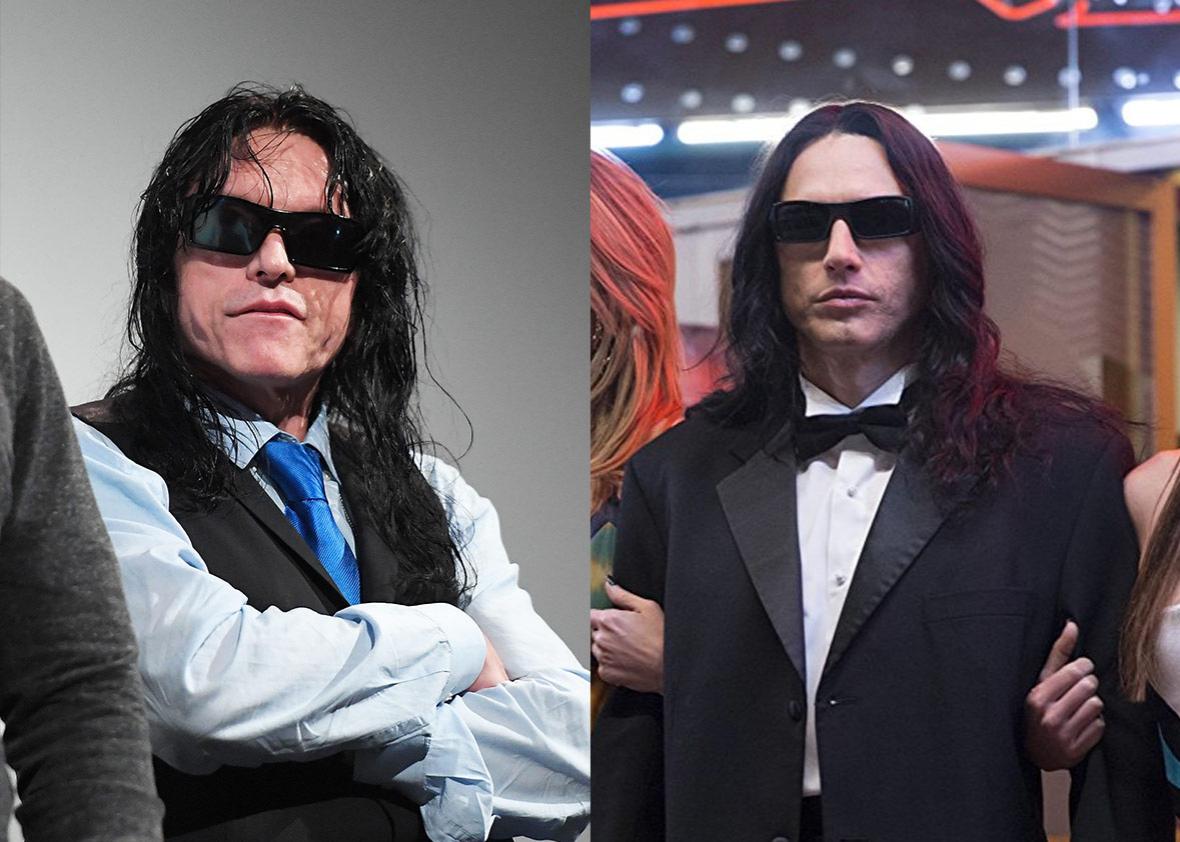James Franco’s The Disaster Artist is the kind of movie that the phrase “truth is stranger than fiction” was invented for. It certainly doesn’t get much stranger than the story of Tommy Wiseau, the eccentric filmmaker behind the equally bizarre cult classic The Room, a film Wiseau financed, wrote, directed, and stars in. And the story gets even stranger when you tell it, as Franco does, from the perspective of Wiseau’s friend and collaborator, Greg Sestero; Franco’s film is based on Sestero’s memoir The Disaster Artist: My Life Inside The Room, the Greatest Bad Movie Ever Made, which he co-wrote with Tom Bissell.
The real Wiseau has called that memoir only “40 percent true,” but he recently showed much more confidence in Franco’s film, which he deemed “99.9 percent true.” That’s an odd disparity, considering that The Disaster Artist is mostly faithful to its source material, but percentages aside, Franco does take a few liberties with the story. We’ve used Sestero’s memoir, as well as interviews with Wiseau and others from over the years, to separate the The Disaster Artist’s facts from the moments that made us say, “It’s not true, it’s bullshit.”
Greg Meets Tommy
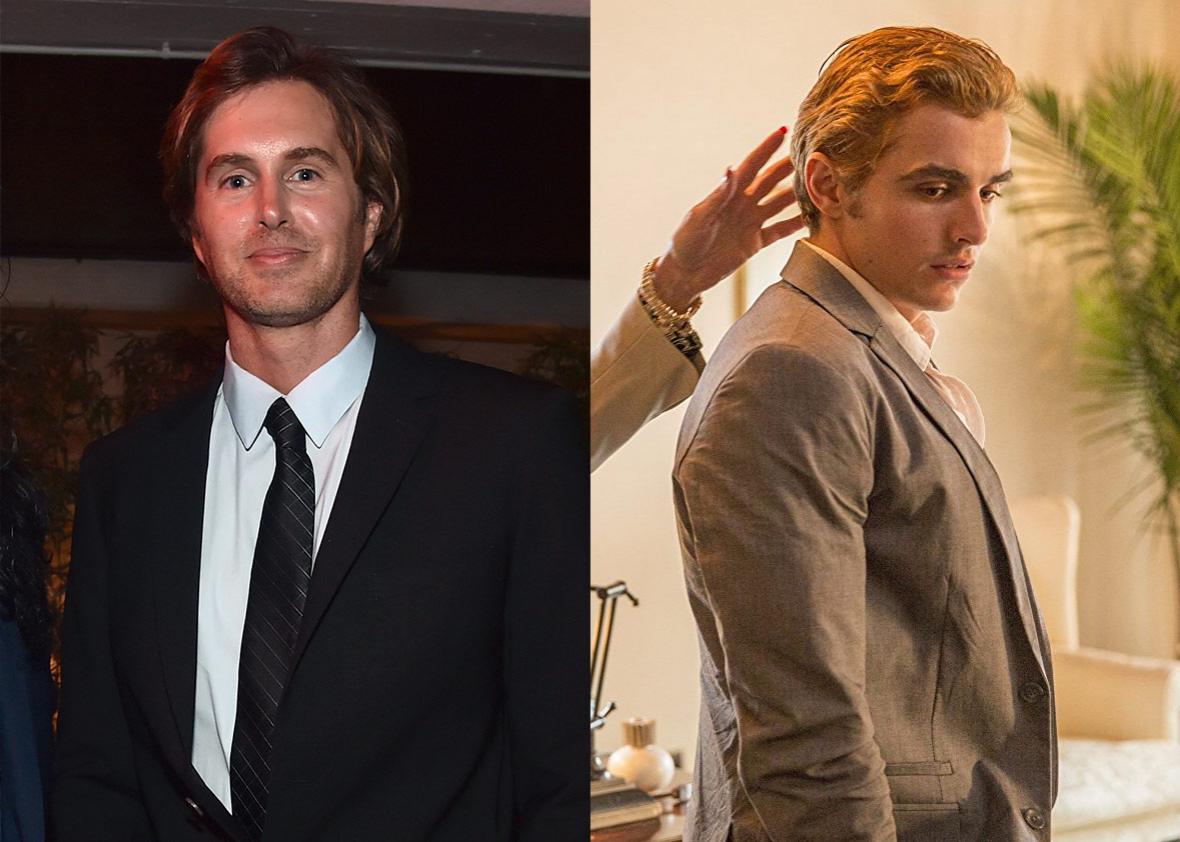
Alberto E. Rodriguez/Getty Images for AFI and A24 Films
As we see in the film, Greg Sestero and Tommy Wiseau really did meet in an acting class taught by Jean Shelton in 1998. The audience’s introduction to Tommy in The Disaster Artist comes when he performs a scene from A Streetcar Named Desire, which is portrayed almost exactly as described in Sestero’s book. The only real difference is the wardrobe:
Cut to: Pirate Guy in a white tank top, his wild hair in a ponytail, wandering around stage left, crying out “Stella!” many more times than the script called for and occasionally breaking into exaggerated sobs. He wasn’t even bothering to direct his agony toward his partner, the intended focus of the scene. He was just launching his performance out into space. Two girls in the first row were squeezing each other’s hands in an effort to contain their laughter.
Tommy’s character is so eccentric that he can seem like a caricature, but Franco actually nails Wiseau’s accent and distinct speech patterns as well as his mannerisms. (You can see the real Wiseau acting opposite Franco in a brief, silly after-credits cameo.) There are some aspects of Wiseau’s identity that are mysterious, but the quirks we see in the film are, by all accounts, perfectly accurate, including Wiseau’s love of Red Bull and his tendency to wear multiple belts at a time.
James’ brother, Dave Franco, plays Greg as a shy kid whose reaction to Tommy’s flailing performance in Shelton’s class wasn’t mockery but admiration. Both in the film and in real life, Sestero proposes that he and Wiseau perform a scene together, the beginning of a memorable, if not necessarily always beautiful, friendship.
The Room’s Influences
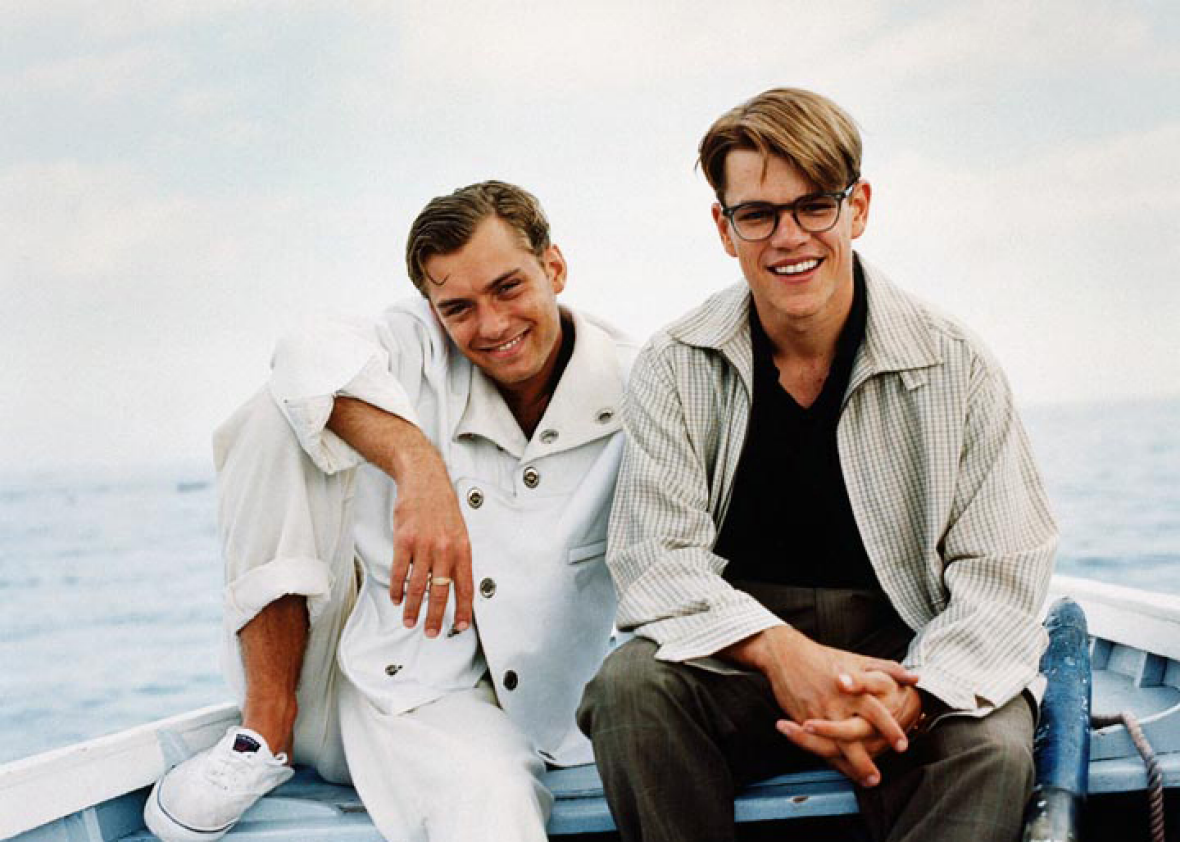
Paramount Pictures/Miramax
Tommy and Greg both become admirers of James Dean in the film, which might seem a little convenient, considering that James Franco won a Golden Globe for playing Dean in a 2001 TV movie. But it’s true that Wiseau and Sestero really did bond over the Rebel Without a Cause actor—in fact, one of The Room’s most famous lines is an homage to that very film.
There was, however, another important film in The Room’s history that is barely even mentioned in Franco’s version of the story: The Talented Mr. Ripley. In his book, Sestero recalls the two watching the film together in January 2000 and wondering if Wiseau would see the parallels between their own friendship and the relationship between Tom Ripley and Dickie Greenleaf. Wiseau, however, had a much more profound reaction to Ripley than Sestero anticipated:
For the first time since I’d known him, maybe for the first time in his life, Tommy insisted on staying in his seat through the entire end-credits crawl. When the lights came up, Tommy looked devastated. His eyes were wet, his mouth slightly pried open. He had the wrung-out look of a man who’d just come to the end of a long, doomed love affair. The movie had bludgeoned him to within an inch of his emotional life.
It was on the drive back from the theater, according to Sestero, that Wiseau realized he was tired of waiting for Hollywood to accept him and decided to make a movie of his own. Franco simplifies things in The Disaster Artist by changing the source of Tommy’s inspiration for The Room; he gets the idea to make his own movie from an offhand remark by Greg.
Franco does nod to the fact that The Talented Mr. Ripley also inspired the name of Sestero’s character in The Room, since Wiseau misheard Matt Damon’s first name as “Mark.”
The Script

Wiseau-Films and A24 Films
One fact that didn’t make it into the film: The Room was originally intended as a play, which Wiseau explained in a recently resurfaced interview with Entertainment Weekly’s Clark Collis from 2008:
Originally, my idea was actually to present in a theater. But then I concluded that not so many people actually got to the theater, particularly in America. The theater is not as popular as a movie. Even a theater like Broadway. That’s my idea, now, the next one, that I want to show The Room on Broadway. That’s what I want to do. Then I change my mind and I say, “You know what? Let’s just make the movie.”
The plot of The Room is very simple, revolving around Johnny, who is betrayed by his fiancé Lisa (Juliette Danielle, played in this case by Ari Graynor) and best friend Mark (Sestero). The script that Dave Franco’s Greg reads at the diner is full of lines that are well-known to fans of The Room and are 100 percent real, even such implausible ones as, “Leave your stupid comments in your pocket.”
Filming the Room
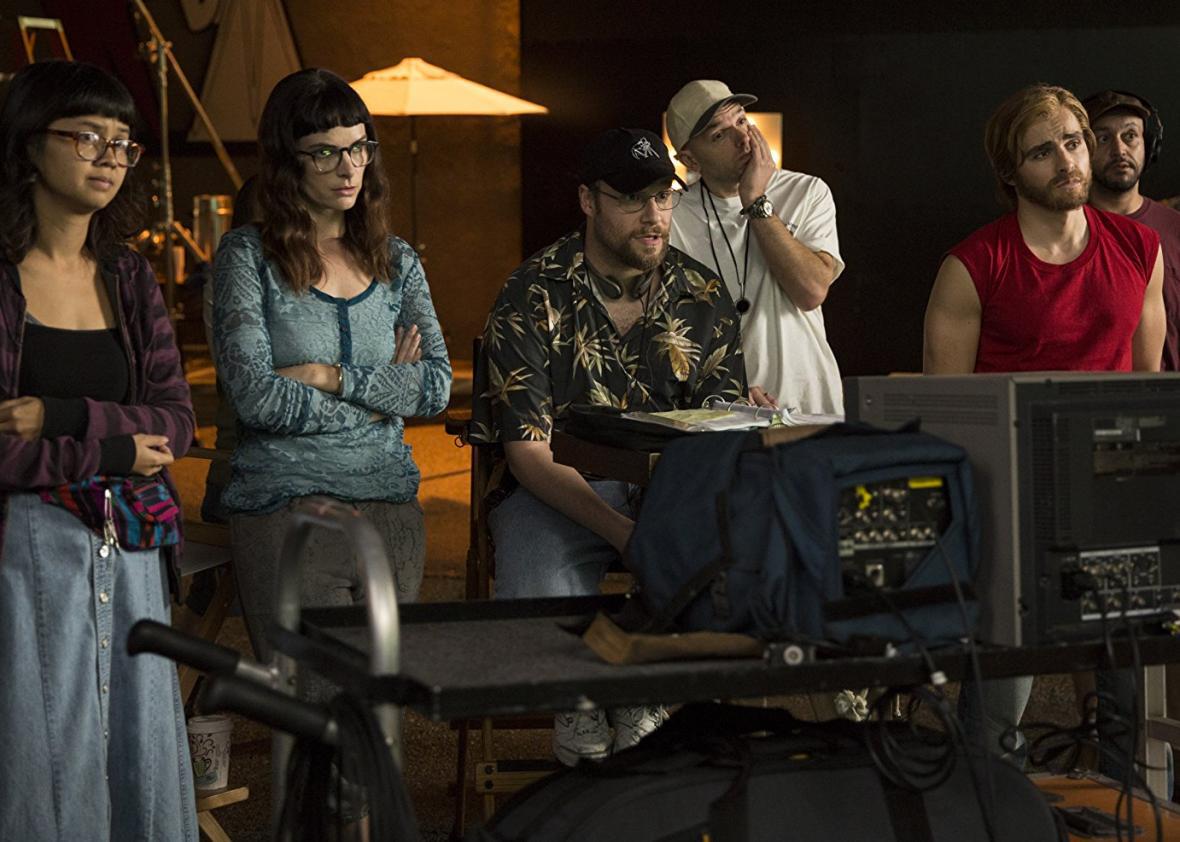
Justina Mintz/Warner Bros. Entertainment Inc./A24 Films
Strange as it may seem, Tommy Wiseau really did buy all his own equipment instead of renting, despite the prohibitive cost, and yes, he really did shoot in both digital and 35mm film at the same time, even though that goes against all logic. And yes, he really did build a set of an alleyway instead of just using the one across the street from the studio. In depicting the making of The Room, Franco again recreates full passages from Sestero’s book. Take, for instance, the filming of the “Oh hai Mark” scene, which A24 wisely used for the film’s first teaser trailer.
Here’s Sestero’s description of the scene, which, by his count, took three hours and 32 takes to get right:
To establish that Johnny is incapable of abuse, Tommy concocted a new opening for this scene, in which Johnny steps onto the Rooftop saying, “It’s not true! I did not hit her! It’s bullshit! I did not.” After which comes this: “Oh, hi, Mark.” There are seventeen words in this sequence. Eleven of them are nonrecurring; only one has the burden of a second syllable. In other words, these are not terribly difficult lines to learn.
[…]
Tommy couldn’t remember his lines. He couldn’t hit his mark. He couldn’t say ‘Mark.’ He couldn’t walk. He couldn’t find his eyeline. He would emerge from the outhouse mumbling, lost, and disoriented. He looked directly into the camera. He swore.
And here’s how that scene plays out in The Disaster Artist:
Franco’s biggest omission in telling the story of the making of The Room is not showing the production’s high turnover rate. The Room went through three different crews during filming, as various members were fired or quit, sometimes en masse, out of frustration with Wiseau’s antics. Wiseau has attributed these departures to “creative differences” such as disagreements about the script, but Sestero describes an almost mutinous atmostphere on set.
Franco does hint at the discord by showing how the crew mocks Tommy behind his back, but he also simplifies things by focusing on two major crewmembers, script supervisor Sandy Schklair (Seth Rogen) and director of photography Raphael Smadja (Paul Scheer), who he treats as composite characters. In the movie, Tommy clashes with both of them, but they stick it out; in reality, neither Smadja nor Schklair made it to the end of filming, with Smadja quitting over Tommy’s refusal to hire a real line producer and Schklair leaving for an opportunity to work with Janusz Kaminski.
“I could spend my day shooting Tommy’s naked ass, or go work with a DP with two Oscars,” Schklair told EW in 2011.
Bryan Cranston and Malcolm in the Middle

Fox
In Franco’s film, Greg gets the kind of opportunity that most aspiring actors can only dream of: a role on a popular television show, at the invitation of the show’s star. During the filming of The Room, Greg and girlfriend Amber (played by Alison Brie) run into Bryan Cranston (playing himself, circa 2001) in a café. Cranston notices Greg’s beard and, after learning that Greg is a struggling actor, offers him the role of a lumberjack in an upcoming episode of Malcolm in the Middle.
Greg jumps at the chance—but Tommy refuses to give him a day off from filming to appear on the show and insists that Greg shave his beard so that Mark can make a dramatic, clean-shaven entrance in the movie. Given the choice between Malcolm in the Middle and The Room, Greg chooses The Room, which leads Amber to leave him. Greg loses both his big break and his love interest in one fell swoop, which sours his already strained relationship with Tommy.
The real story behind the beard is not nearly as dramatic. The real Greg Sestero was reluctant to shave his beard, but it wasn’t because he’d been promised a role on Malcolm in the Middle; in his book, Sestero says he already suspected that The Room was going to be a disaster and he liked having the beard as a disguise so that he could later disassociate himself from the film.
James Franco has worked with Cranston before on In Dubious Battle and Why Him?, which makes this an especially fun cameo.
The Premiere
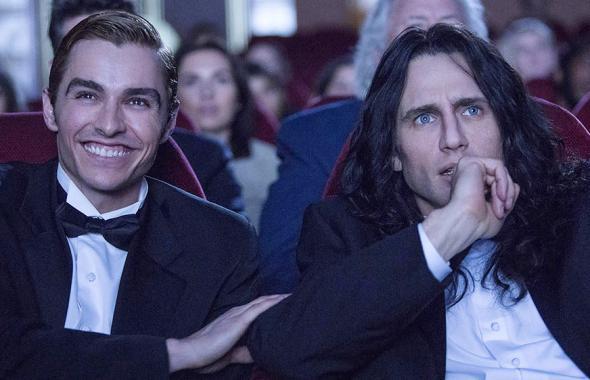
Justina Mintz/Warner Bros. Entertainment Inc/A24 Films
In the film, Tommy and Greg have a falling out right at the end of filming The Room, and only reunite for the premiere, which turns out to be an unexpected triumph. While Wiseau and Sestero did have falling outs over the years of their friendship, that’s not why they were out of touch leading up to the 2003 premiere, according to Sestero; it’s because Wiseau was busy preparing, editing the final cut of the film, recording PG-rated dialogue for primetime television, and committing to a guerrilla marketing campaign that included the film’s notorious billboard on Highland Avenue.
As for the glowing, uproarious reaction that the film receives at the premiere, that’s not quite what happened, at least according to Robyn Paris, who played Michelle in The Room and was there during that first screening. The Disaster Artist ends with the audience watching the film and applauding Tommy, who has made peace with the fact that his movie is a terrible drama but has comedic value. In her review for EW, Paris recalls the laughter, but not the cheering, and notes that many people walked out of The Room’s premiere within the first five minutes. It took time for The Room to become the cult classic it is today.
